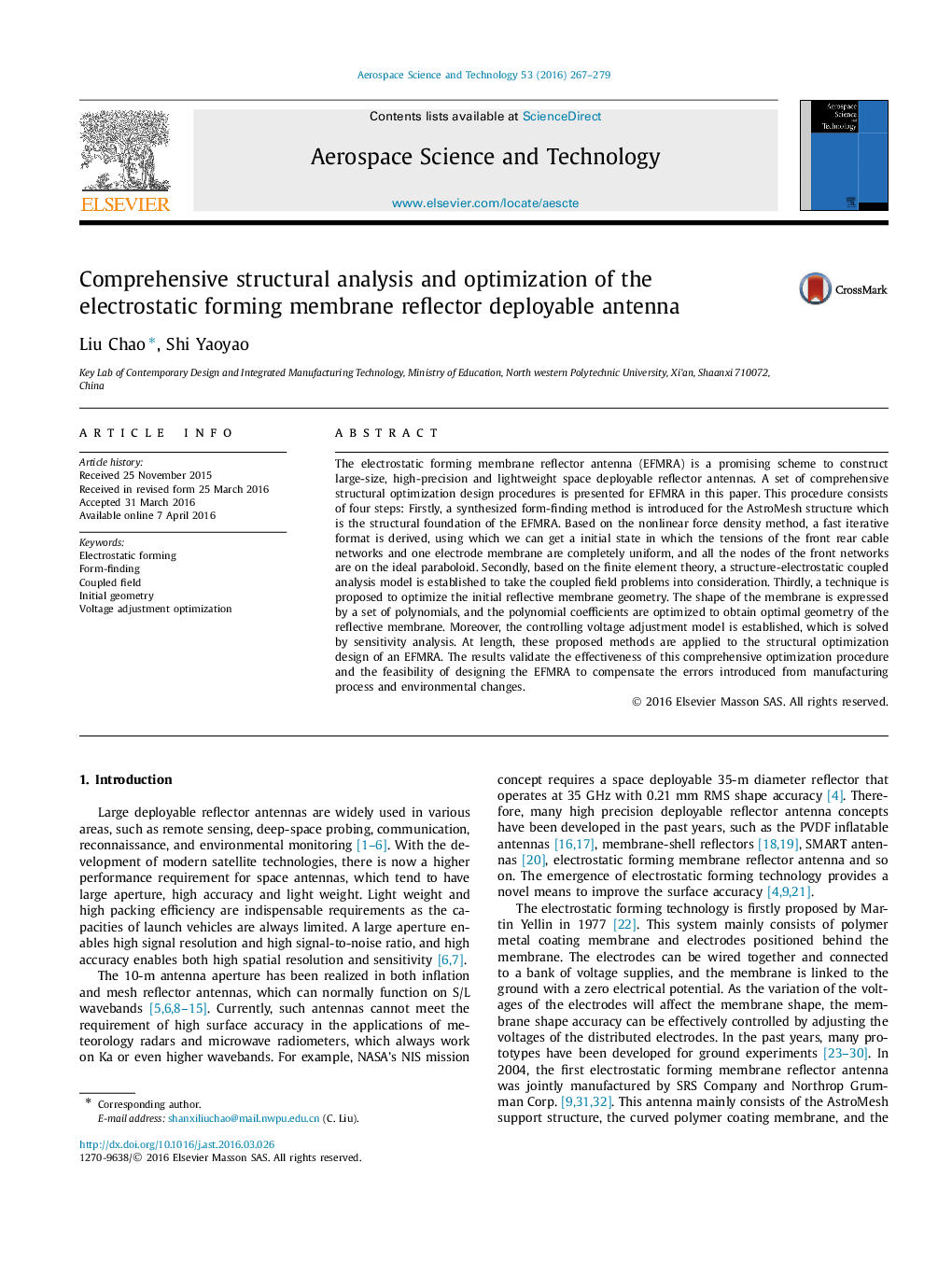| Article ID | Journal | Published Year | Pages | File Type |
|---|---|---|---|---|
| 1717686 | Aerospace Science and Technology | 2016 | 13 Pages |
The electrostatic forming membrane reflector antenna (EFMRA) is a promising scheme to construct large-size, high-precision and lightweight space deployable reflector antennas. A set of comprehensive structural optimization design procedures is presented for EFMRA in this paper. This procedure consists of four steps: Firstly, a synthesized form-finding method is introduced for the AstroMesh structure which is the structural foundation of the EFMRA. Based on the nonlinear force density method, a fast iterative format is derived, using which we can get a initial state in which the tensions of the front rear cable networks and one electrode membrane are completely uniform, and all the nodes of the front networks are on the ideal paraboloid. Secondly, based on the finite element theory, a structure-electrostatic coupled analysis model is established to take the coupled field problems into consideration. Thirdly, a technique is proposed to optimize the initial reflective membrane geometry. The shape of the membrane is expressed by a set of polynomials, and the polynomial coefficients are optimized to obtain optimal geometry of the reflective membrane. Moreover, the controlling voltage adjustment model is established, which is solved by sensitivity analysis. At length, these proposed methods are applied to the structural optimization design of an EFMRA. The results validate the effectiveness of this comprehensive optimization procedure and the feasibility of designing the EFMRA to compensate the errors introduced from manufacturing process and environmental changes.
